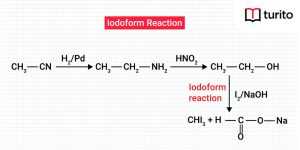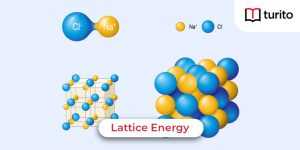Atomic Orbitals
This article explains the introduction part of atomic orbitals. It analyses the detailed structure of s and p orbitals and their models and orbital energies. d orbital is determined only with regards to their energy, and f orbit is discussed only noticed in passing.
Orbitals
Chemistry Orbital definition as in Chemistry and Physics is given as the orbitals, which are arithmetical operations representing the wave type of a particle or the electron pairs existing in the atom. The possibility of identifying an electron over the nuclei will be measured by using this expression. In the simplest language, an atomic orbital is defined as the material circumscribed area or distance in which the electrons exist. In general, the electrons are present inside the atom, where electrons are stable in the electronic cloud.
There are four kinds of atomic orbitals; namely s(sharp), p(principle), d(diffuse), and f(fundamental).
Also, there are a few orbital combinations present inside every atom shell. We can find s orbitals in the shell of n=1, p orbitals in the n=2 shell and n=3 containing s and p orbitals. In the n=3 shell, you have s, p, and d orbitals, and all four kinds of orbitals in the n=4 shell.
This is essential to consider here as all the shells and orbitals are units of an experimental concept proposed to describe what is noticed regarding atomic bonding and structure. This theory will remain true if someone brings an exceptional representation.
Electrons live in a shell or orbital, which it encircles the nuclei at different separations. Every shell is classified into subshells of growing energy named s, p, d, and f.
The subshells contain atomic orbitals–zonal distance inside the subshell in which a particle is probably identified. s, p, d, and f are the four different kinds of orbitals.
Every type of orbital is formed with a different structure depending on its electron’s energy.
The spherical-shaped orbitals are called the s orbital.
The dumb shell-shaped orbitals are called p orbitals. They have three p orbitals which vary in familiarization through 3D axes, having five d orbitals; four contain a four-leaf structure with various aspects, and the one is different from them. They also have seven f orbitals, every orbital with various aspects.
What is an orbit in chemistry?
The orbit is a mathematical expression, which is known as a wave function in the concept of physics and chemistry. The orbit is an arithmetical function known as the wave function. It determines the attributes of not greater than a pair of particles in the proximity of a fundamental particle or a nuclei structure in a particle. Generally, an orbit is defined as a 3D sector inside which there is a possibility of 95% electron identification.
Atomic orbital
What is atomic orbital? Atomic orbitals are determined as arithmetical expressions which give intuition into the wave characteristics of an electron or electron pairs that present over the nuclei particles. In classical physics and structural anthropology, arithmetical expressions are generally engaged to define the possibility of identifying a particle (which belongs to a molecule) in a particular area over the atomic nucleus.
Atomic orbital definition: A function that describes the location and wave-like behavior of an electron in an atom.
It is significant to consider that the phrase ‘atomic orbital’ is used to mention the material conditions or physical area over the nucleus of an atom where the possibility of a particular particle being existed is highest. The existence of a particle in that area is anticipated by the arithmetical expression of an atom’s orbit.
It is essential to determine the atomic orbit features, which rely on the following quantum number values :
- The symbol ‘n’ is denoted with the principal quantum numbers.
- The symbol ‘I’ denotes the orbital angular quantum number, also called the azimuthal quantum number.
- The symbol ‘ml’ is denoted with magnetic quantum numbers.
Additionally, this can be acclaimed that every orbital in an atom contains at least two particles. As opposed to other atomic orbitals, the orbitals consist of two particles. Every electron contains the opposite and equal spin where the atom’s orbit is occupied overall.
The spin quantum number value gives the perception of an electron’s orbit, which is represented by ‘ms’. Hence, intuition into every electron consisting in every orbit of an atom of a provided atom is acquired by defining the quantum number values of the four. The four quantum numbers are:
- The electron spin quantum number.
- The principal quantum number.
- The magnetic quantum number.
- The azimuthal quantum number.
An atomic orbital name is generally demonstrated regarding a sequence of the azimuthal (I) and principal quantum number (n). The relation among the various quantum numbers and atomic orbitals and the names of atomic orbitals are described as the following along with the azimuthal quantum number values:
- The azimuthal quantum number value is zero in the s orbital
- The value of the Azimuthal quantum number is one in the p orbit.
- d orbit, in which the quantum number value of Azimuthal is taken as 2.
- f orbit, in which the Azimuthal quantum number value is 3.
- The azimuthal quantum number value is 4 in the g orbital.
- The value of the Azimuthal quantum number is 5 in the h orbital.
It is distinguished that the next atomic orbitals will be given names consecutively, leaving out the ‘j’ alphabet (this is due to definite languages not determining among the ‘j’ and ‘i’ alphabets). Hence, when the ‘I’ is 6, the orbit name is the ‘i’, and when the azimuthal quantum number value is 7, its orbital name is ‘k’ orbital.
Also, the first four orbital names (s, p, d, and f) are obtained from the definitions which were given at starting by the spectroscopic analysts who read the spectrum analysis of the lithium family and determined them as s- ‘sharp’, p-‘principal’, d-‘diffuse’, and f-‘fundamental’.
When labeling the particular atoms in orbit, the principal quantum number value should be given as an initial label to the alphabet’s depiction of the ‘I’ azimuthal quantum number. This is essential to consider that the Azimuthal quantum number value relies on the principal quantum number value.
For every provided number of ‘n’, the Azimuthal quantum number value can vary from 0 to (n-1). For illustration, if the ‘n’ value is 3, the possible values of the Azimuthal quantum number vary from 0 to (3-1), i.e., 0, 1, and 2.
Hence the atomic orbit name is 3s (for I=0 and n=3), for n=3 and l=1, the atomic orbital name is 3p, and the atomic orbital name is 3d (for n=3 and l=2). And we also notice that it is impossible for the atomic orbital name 3f as it needs both the values to be three, i.e., (‘n’ =3 and ‘l’ =3), which is impossible, so the azimuthal quantum number value should be less when compared to the value of the principal quantum number.
Conclusion
The Atomic orbitals define the possibility of identifying the provided atomic particle in the provided space area. On merging the orbitals of an atom in an atomic molecule, the other molecular orbitals (MOs) are produced.
Frequently Asked Questions
Q1. Discuss the four types of orbitals.
The four general kinds of orbitals: s, p, d, and f.
- s orbit is in the shape of a sphere and will have two particles.
- The dumb shell-shaped orbitals are called p orbitals.
- Three p orbitals which vary in familiarization through 3D axes.
- And have five d orbitals; four contain a four-leaf structure with various aspects, and the one is different from them.
- Seven f orbitals, every orbital with various aspects.
Q2. What is an atomic orbital?
Orbit is an arithmetical function, which is known as a wave function. It determines the attributes of not greater than a pair of particles in the proximity of a fundamental particle or a nuclei structure in a particle. Generally, an orbit is defined as a 3D sector inside which there is a possibility of 95% electron identification.
Atomic orbitals are determined as arithmetical expressions which give intuition into the wave characteristics of an electron or electron pairs that present over the nuclei particles. In classical physics and structural anthropology, arithmetical expressions are generally engaged to define the possibility of identifying a particle (which belongs to a molecule) in a particular area over the atomic nucleus.
Q3. Where are atomic orbitals found?
Most often an electron is found within a defined region of space that occurs close to the nucleus. This region contains the atomic orbitals where the electron is situated. Thus, an atomic orbital is found fairly close to the nucleus. An atomic orbital is the region of space the electron inhabits and is close to the nucleus.
Q4. What principles are to be followed for assigning electrons to atomic orbitals?
When assigning electrons to atomic orbitals, one must follow all the three rules given below:
- The Aufbau Principle
- The Pauli-Exclusion Principle
- Hund’s Rule.

Relevant Articles
Butanoic Acid – Structure, Properties, Uses
Butanoic Acid The carboxylic acid, butanoic acid, has the structural …
Butanoic Acid – Structure, Properties, Uses Read More »
Read More >>What is Iodoform? Characteristics and Uses
Iodoform The formula for Iodoform is CHI3. It is biotic …
What is Iodoform? Characteristics and Uses Read More »
Read More >>Lattice Energy – Explanation, Factors & Formulas
Lattice Energy Lattice energy evaluates the intensity of the ionic …
Lattice Energy – Explanation, Factors & Formulas Read More »
Read More >>Lead Acetate – Definition, Properties, Uses
Lead Acetate Have you ever licked lipstick when you sketch …
Lead Acetate – Definition, Properties, Uses Read More »
Read More >>




















Comments: